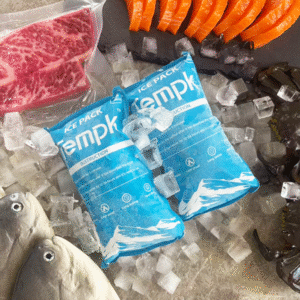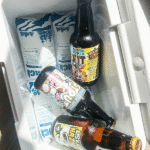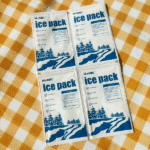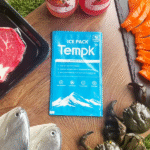Packing dry ice for shipping isn’t just about tossing blocks into a box—it’s about compliance, safety, and keeping your products intact. In 2025, following IATA PI 954 and 49 CFR 173.217 is essential for international and domestic shipments. You need the right amount of dry ice, proper insulation, clear labeling with “UN 1845,” and a package design that allows CO₂ to vent. Done right, you’ll avoid costly delays, protect your cargo, and pass carrier checks the first time.
-
Calculate how much dry ice you actually need for your lane and payload
-
Choose the right insulated container to extend hold time and reduce waste
-
Label and document packages correctly to comply with Class 9 rules
-
Apply real-world cold chain best practices for food, pharma, and biotech
-
Understand 2025 innovations: carbon-negative pellets, IoT monitoring, and sustainable insulation
How much dry ice should you use for shipping?
Direct answer: Plan 2.5–5 lb (≈1.1–2.3 kg) per 24 hours per small cooler, then adjust for insulation, climate, and transit delays. Mark only the net dry ice weight in kg on the box.
Expanded explanation:
The sublimation rate depends on insulation type, box size, and ambient conditions. A 48-hour ground shipment in summer might require 10–14 lb (4.5–6.4 kg), while the same shipment with a vacuum-insulated shipper may need just 8–10 lb. Always round up and add a 25–40% buffer for customs or weather delays.
Easy sizing shortcut
| Route & Duration | Base Estimate | Buffer | What It Means for You |
|---|---|---|---|
| Domestic air, 48 hr | 6–8 lb | +2 lb for thin liner | Safe for 2-day lanes |
| Warm 3-day ground | 10–14 lb | Upgrade insulation | Reduce spoilage risk |
| Intl express, 2–3 days | 8–12 lb | Buffer 25–40% | Covers customs dwell |
Pro tips:
-
Place dry ice on top of the payload—cold air sinks and stabilizes temperatures.
-
Record net dry ice weight during pack-out—this is a compliance requirement.
-
Use a pack-out calculator or historical lane data to refine estimates.
What packaging works best for dry ice shipments?
Direct answer: Use a vented corrugated outer box with strong insulation (EPS or VIP), secure the product in a sealed inner container, and leave a vent path for gas.
Details:
-
EPS foam (1–1.5 in): Affordable, holds for 24–48 hours, ideal for domestic shipping.
-
Vacuum Insulation Panels (VIP): High performance, holds for 48–96 hours, reduces dry ice by ~30%.
-
Rigid polystyrene coolers: Reusable, durable, moderate efficiency.
| Container Type | Hold Time | Efficiency | Application |
|---|---|---|---|
| EPS liner (1–1.5 in) | 24–48 hrs | Moderate | Low-cost, short hauls |
| VIP panels | 48–96 hrs | High | Long, high-value shipments |
| Rigid cooler | 24–72 hrs | Moderate-high | Durable, reusable option |
Practical advice:
-
For weekend risk, add 25–40% dry ice reserve or switch to VIP.
-
For parcels >30 kg capacity, ensure label text height ≥12 mm.
-
Never seal completely; venting is mandatory to prevent ruptures.
What labels and documents are required in 2025?
Direct answer: Mark one face of the package with:
-
“UN 1845, Dry Ice, net __ kg”
-
Class 9 hazard diamond
-
Shipper and recipient addresses (not on the hazard label)
Expanded:
-
FedEx/UPS: No hazmat declaration if dry ice is used to cool non-dangerous goods. Still, you must input net kg in shipping tools.
-
USPS: Domestic only, max 5 lb by air; no international dry ice shipments allowed.
-
IATA 2025 Checklist: Self-audit tool for shippers to avoid acceptance delays.
Safety rules you cannot ignore
-
Never use airtight containers: CO₂ must vent.
-
Wear insulated gloves: Frostbite can occur in seconds.
-
Ventilate vehicles & storage: CO₂ can displace oxygen.
-
Don’t write inside the Class 9 diamond: Labels must be clean and clear.
Case insight: A seafood exporter reduced failed scans by 60% after switching to preprinted UN 1845 panels with a dedicated address area.
What are the 2025 innovations in dry ice shipping?
-
Carbon-negative dry ice pellets: Made from captured CO₂, reducing emissions.
-
Compostable insulation (biofoam): Meets ISTA 7E freeze standards, composts in ~100 days.
-
IoT monitoring: Real-time temperature alerts and data logging for compliance.
-
AI routing & automation: Cuts dwell times and optimizes dry ice allocation.
Market insight: By 2025, reusable shippers and VIP packaging are cutting spoilage claims by over 20%, making eco-friendly choices financially attractive.
FAQ
Q1: How to pack dry ice for shipping without a hazmat declaration?
Use a ventilated box, add insulation, weigh and label “UN 1845, Dry Ice, net _kg,” and apply a Class 9 label.
Q2: How much dry ice per day should I plan for?
2.5–5 lb per 24 hr for small shippers; always add a 25% buffer.
Q3: Can I ship dry ice internationally with USPS?
No. USPS permits domestic dry ice shipments only, ≤5 lb by air.
Q4: Where should I place the hazard label and text?
On the same face of the package, outside of the hazard diamond.
Q5: Can I mix gel packs with dry ice?
Yes. Gel packs act as a buffer once dry ice is spent, extending hold time.
Summary & Recommendations
To pack dry ice in 2025:
-
Choose a vented outer box with EPS or VIP insulation
-
Add dry ice above the payload and record the net kg
-
Mark clearly with UN 1845 + Class 9 hazard label
-
Follow carrier-specific guides to avoid labeling errors
-
Consider VIP, reusable shippers, and IoT monitoring to cut cost and risk
Next steps:
-
Use Tempk’s dry ice calculator for frozen shipping
-
Explore gel packs vs dry ice for pharma
-
Download the IATA packing instruction 954 checklist
About Tempk
At Tempk, we design cold chain solutions that reduce dry ice consumption while maintaining compliance. Our systems combine validated pack-outs, eco-friendly insulation, and automated labeling tools to help you cut exceptions and reduce spoilage.
CTA: Ready to optimize your shipments? Schedule a cold chain consultation and get a tailored pack-out review for your top shipping lanes.
























